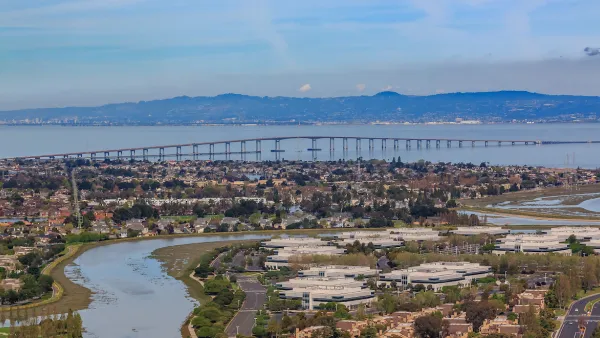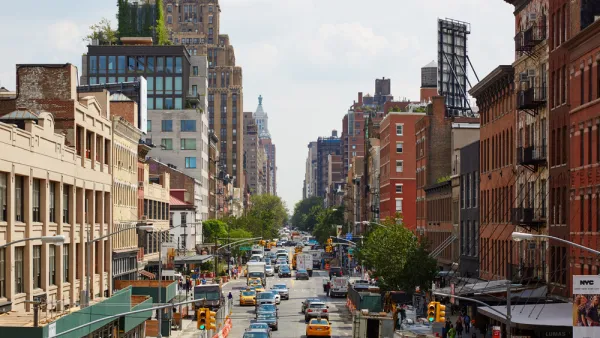Continuing his series examining the changes and new provisions detailed in the new federal surface transportation bill, Jason Jordan, APA's Director of Policy and Government Affairs, looks at the new Transportation Alternatives program.
Replacing the Transportation Enhancements, Safe Routes to School, and Scenic Byways programs from the prior comprehensive funding bill (SAFETEA-LU), the new Transportation Alternatives (TA) program was one of the most contentious pieces of the MAP-21 negotiations. So where did the final bill land?
Although funding for the program continues to be dedicated (albeit at FY 2009 levels), "The major compromise reached on Transportation Alternatives is to
essentially expand both flexibility for states and control for
metropolitan regions," writes Jordan. The new program expands the types of projects eligible for funding and gives each state an avenue to "transfer its balance of unobligated funding to other
projects."
According to Jordan, "Supporters of TA-eligible projects will have new opportunities to pursue
local projects funding through the 50 percent set aside for metro
areas. But, these same supporters will have to pressure states to ensure
that vital bike, pedestrian, and safety resources are not siphoned off
to other projects by state officials."
FULL STORY: Inside MAP-21: Transportation Alternatives

National Parks Layoffs Will Cause Communities to Lose Billions
Thousands of essential park workers were laid off this week, just before the busy spring break season.

Retro-silient?: America’s First “Eco-burb,” The Woodlands Turns 50
A master-planned community north of Houston offers lessons on green infrastructure and resilient design, but falls short of its founder’s lofty affordability and walkability goals.

Delivering for America Plan Will Downgrade Mail Service in at Least 49.5 Percent of Zip Codes
Republican and Democrat lawmakers criticize the plan for its disproportionate negative impact on rural communities.

Test News Post 1
This is a summary

Test News Headline 46
Test for the image on the front page.

Balancing Bombs and Butterflies: How the National Guard Protects a Rare Species
The National Guard at Fort Indiantown Gap uses GIS technology and land management strategies to balance military training with conservation efforts, ensuring the survival of the rare eastern regal fritillary butterfly.
Urban Design for Planners 1: Software Tools
This six-course series explores essential urban design concepts using open source software and equips planners with the tools they need to participate fully in the urban design process.
Planning for Universal Design
Learn the tools for implementing Universal Design in planning regulations.
EMC Planning Group, Inc.
Planetizen
Planetizen
Mpact (formerly Rail~Volution)
Great Falls Development Authority, Inc.
HUDs Office of Policy Development and Research
NYU Wagner Graduate School of Public Service




























